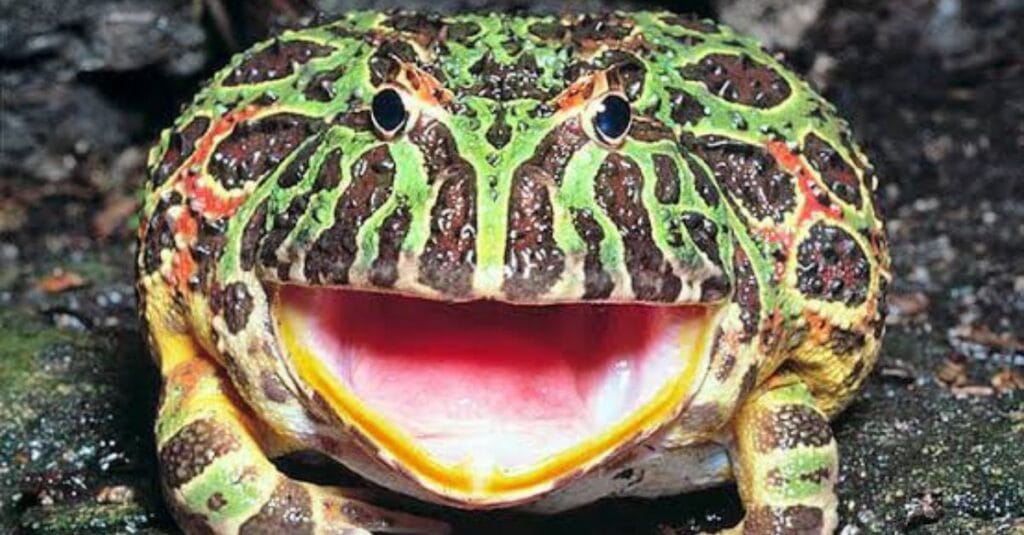🐸 How to Handle a Pacman Frog Without Stressing It
A Beginner’s Guide to Safe, Minimal Handling
How to Handle a Pacman Frog Without Stressing It - At a Glance
Pacman frogs prefer not to be handled, but sometimes it’s necessary. To handle them without stress, always use wet, gloved hands, move slowly, and limit contact time. Avoid frequent handling, and never pick them up by force. This guide explains when and how to handle safely and respectfully.
Pacman frogs (Ceratophrys spp.) are known for their low-maintenance care, quirky behavior, and sedentary lifestyle—but they are not naturally social or cuddly pets.
That said, there are situations where handling your Pacman frog is necessary—for tank maintenance, health checks, or enclosure transfers. The key is knowing how to do it safely, gently, and infrequently.
In this guide, we’ll cover:
Whether handling is safe or necessary
When to handle (and when to avoid it)
Step-by-step handling techniques
Signs of stress to watch for
How to make your frog comfortable again

When Should You Handle a Pacman Frog?
Handling should only happen when:
Cleaning the enclosure
Transferring your frog to a temporary or quarantine tank
Inspecting for illness or injury
Bathing or rehydrating (e.g., during constipation or mild impaction)
👉 How to Clean a Pacman Frog Tank Safely
👉 How to Tell If Your Pacman Frog Is Sick

When You Should Not Handle Your Frog
Avoid handling when your frog is:
Shedding
Freshly fed (wait at least 24 hours)
Burrowed or in brumation
Showing signs of illness or extreme stress
A juvenile (more sensitive than adults)
👉 Pacman Frog Shedding: Signs and What to Expect
👉 Brumation in Pacman Frogs: Do They Hibernate?
How to Handle a Pacman Frog Without Stressing It
What You’ll Need:
Powder-free nitrile gloves (or clean, wet hands)
Dechlorinated water
Clean towel or soft surface
Small holding container (for temporary placement)
Step-by-Step Guide
Step 1: Wash and Rinse Hands Thoroughly
Use unscented soap and rinse with dechlorinated water to remove harmful oils or chemicals.
Step 2: Moisten Your Hands or Gloves
Dry hands irritate amphibian skin. Always wet your gloves or hands with dechlorinated water before contact.
Step 3: Approach from the Side, Not Above
Coming from above mimics predator behavior. Gently scoop your frog from the side or underneath.
Step 4: Support the Body Fully
Hold your frog gently but securely—supporting its belly and legs. Do not squeeze or dangle.
Step 5: Keep Handling Time Short
Limit handling to 1–2 minutes max. Return your frog promptly to its enclosure.
Step 6: Rinse Again After Handling
Always wash your hands after, and rinse gloves if you plan to use them again.
Signs of Stress During Handling
| Behavior | What It May Indicate |
|---|---|
| Loud croaking or squealing | Fear or defensive behavior |
| Excessive squirming | Discomfort or overstimulation |
| Gaping mouth or lunging | Perceived threat or stress response |
| Staying buried for days after | Recovery from overhandling |
If any of these signs appear, end handling immediately and leave your frog undisturbed for a few days.
Tips to Minimize Handling Stress
- Use a container transfer instead of bare hands when possible
- Keep the environment quiet and dim during handling
- Only handle during the frog’s active hours (typically late evening)
- Let your frog settle for 2–3 days after any handling session
- Avoid handling back-to-back days
FAQ: Handling Pacman Frogs
Q: Can I bond with my Pacman frog through handling?
A: No. Pacman frogs don’t form emotional bonds and prefer to be left alone. Handling is for necessity only, not bonding.
Q: Is it safe for kids to handle them?
A: Not recommended. Their skin is sensitive and they may bite if startled. Always supervise closely or avoid handling with children altogether.
Q: Do Pacman frogs bite when handled?
A: They can. Pacman frogs have a strong feeding response and may bite if they mistake your fingers for food.
👉 Pacman Frog Bite: What to Do If It Happens
